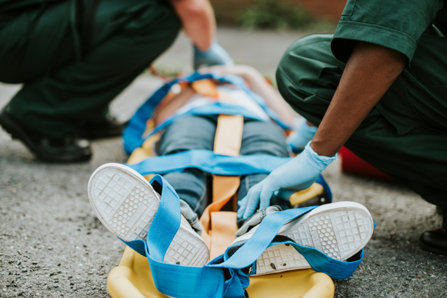Opioid Prescribing to Young People Still Ongoing

For years, finding data on young adult and adolescent opioid prescribing was more akin to a deep sea treasure hunt than a cursory scan of the internet. There just wasn’t a lot of information out there. But now that’s changing. People are becoming more aware of adolescent opioid prescribing. They’re starting to see that maybe, just maybe, we should not be giving kids the same opioid painkillers that created the opioid addiction epidemic our nation now struggles with.
In a May 28th, 2019 report by U.S. News, columnist Amy Norton writes, “Even amid an epidemic of abuse, opioid painkillers are still commonly prescribed to teenagers and young adults for conditions like tooth and back pain. Researchers found that between 2005 and 2015, opioids were prescribed to teens and college-age adults at nearly 57 million visits to doctors’ offices and emergency departments in the United States.”
The article goes on to talk about how 15 percent of all ER visits for teen and college-age adults end with an opioid prescription. And these prescriptions are not being doled out solely for post-operation recovery from major surgery. The article sites bone fractures, sprained ankles, lower back pain, and dental problems as being the primary reasons for physicians prescribing opioid pain relievers to youngsters.
Raising Awareness of Young Adult and Adolescent Opioid Prescribing
According to Dr. Todd Callahan of Vanderbilt University Medical Center in Nashville, Tennessee (quoted in Amy Norton’s U.S. News article), “What we can say is that opioids are still commonly prescribed to adolescents and young adults. And this study gives us some clear signals about which diagnoses are most related to those prescriptions.”
Basic medical knowledge dictates that for physical problems like dental pain or back discomfort, non-opioid pain relief should be any medical expert’s first choice in attempting to address that pain. In fact, the Centers for Disease Control and Prevention strongly encourages physicians to save opioid pain relievers as a last resort in treating pain. The CDC’s prescribing guidelines go in-depth on what steps doctors should take before they prescribe an opioid analgesic.
“About 60% of emergency visits for ‘dental disorders’ ended with an opioid prescription. And among young adults, the drugs were prescribed at 38% of emergency visits for low back pain.”
However, the research sheds light on the inappropriate prescribing habits of some physicians. According to Amy Norton’s U.S. News article, “About 60% of emergency visits for “dental disorders” ended with an opioid prescription. And among young adults, the drugs were prescribed at 38% of emergency visits for low back pain.”
It is concerning that medical experts are so ready and willing to prescribe powerful, potentially mind-altering opioid drugs to young people. It is especially concerning when we consider the types of risks and dangers adolescents could incur when they are exposed to mind-altering drugs.
Opioid Overdoses among Young People on the Rise

One of the reasons why we should be concerned about medical professionals prescribing opioids to young people is because opioid overdoses among this age group have increased dramatically since the turn of the century. The Pediatric Academic Society published a research summary on this in the American Academy of Pediatrics News, dated April 27th, 2019.
According to the PAS report, fatal opioid overdoses among individuals under the age of 19 have soared by 268 percent from 1999 to 2016. Fatal overdoses among adolescents have traditionally been a very uncommon occurrence, but the prevalence of such incidents is increasing.
According to the research, about 9,000 adolescents have died from opioid overdoses since 1999. The Northeast region of the U.S. had the highest rates of overdoses in both 1999 and 2016. The Midwest experienced the most significant increase, with that region reporting a 429 percent increase in fatal opioid overdoses among youth.
Traditionally, opioid prescribing has been quite uncommon and infrequent among young patients. The PAS report shows insight into that area as well. According to their research, only about .9 percent of 113 million clinical visits for adolescents between 2012 and 2016 involved opioid prescribing. But because adolescents are more susceptible to habit-forming drugs, a young person is more likely than an adult to form an addiction to an opioid pain reliever. Even though young people are prescribed opioids less often, there is more risk when they are prescribed such drugs.
Put another way, while perhaps only one out of four adults who are prescribed opioids will end up becoming addicted to them, the statistic is likely closer to one-in-three or even one-in-two for adolescents. We need to be far more conservative and extremely hesitant when considering opioid pain relievers for young people.
As a final note from the PAS report, study author Dr. Abbey Masonbrink concluded with a statement for the need for change in how we address opioid prescribing for youngsters: “Future efforts should support development of pediatric pain management guidelines based in a multimodal approach to minimize use of opioids and target reduction of opioids with pediatric safety warnings.”
Curbing Opioid Prescribing for Our Sons and Daughters

The risks in putting young people on powerful painkillers could not be more clear. Doing so “starts them young” as it were, exposing them to opioids when they are at an age where they are even more likely to be adversely affected by the drugs.
Young people simply don’t need opioid painkillers, except in very rare and extreme cases. And there’s enough medical evidence and sheer common sense to back that up. Rather than exposing adolescents to pharmaceutical drugs which kill thousands of people every year, we should be finding alternative and holistic methods of pain relief for kids. We should be researching natural remedies or hands-on approaches to treating young people.
Such efforts have long-term returns on investment, too. If we raise our next generation to understand that “You don’t solve life’s problems by simply popping a pill,” we’ll create a future for America that is not so reliant on pharmaceuticals. If we get kids and young adults thinking with comprehensive and involved approaches to pain relief that aim to address the source of the pain (rather than just taking a pill to curb symptoms), we will create a generation of healers, a new America that shuns Big Pharma, that lives without addiction to pharmaceuticals,and that treats physical pain at its source.
That’s a future worth aspiring to.
Sources:
- https://www.usnews.com/news/health-news/articles/2019-05-28/opioid-prescriptions-to-teens-young-adults-still-common
- https://www.cdc.gov/drugoverdose/pdf/Guidelines_Factsheet-a.pdf
- https://www.aappublications.org/news/2019/04/27/pasopioids042719
- https://www.southcarolinablues.com/web/nonsecure/sc/Member+Home/Live+Healthy/Live+Healthy+Archive/Surprise/


 ®
®